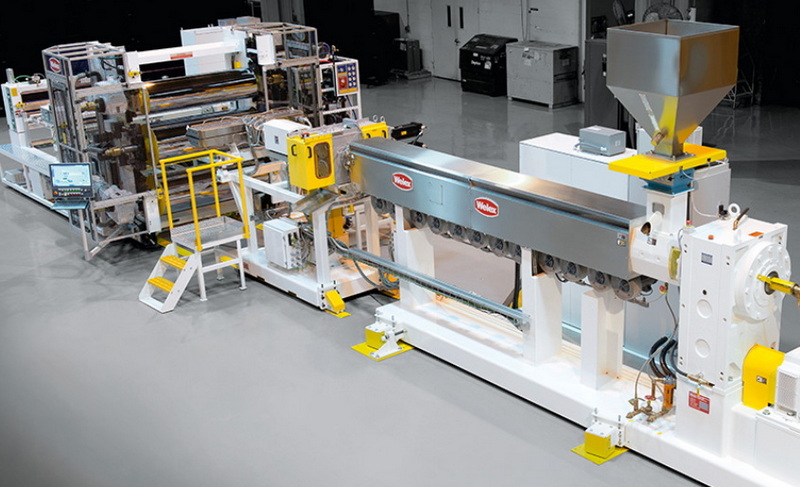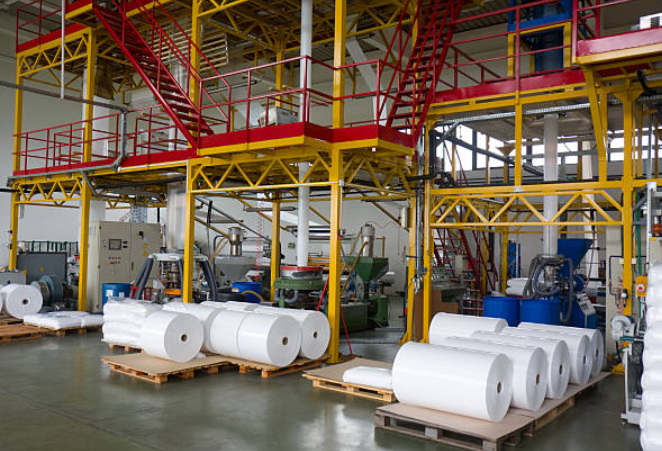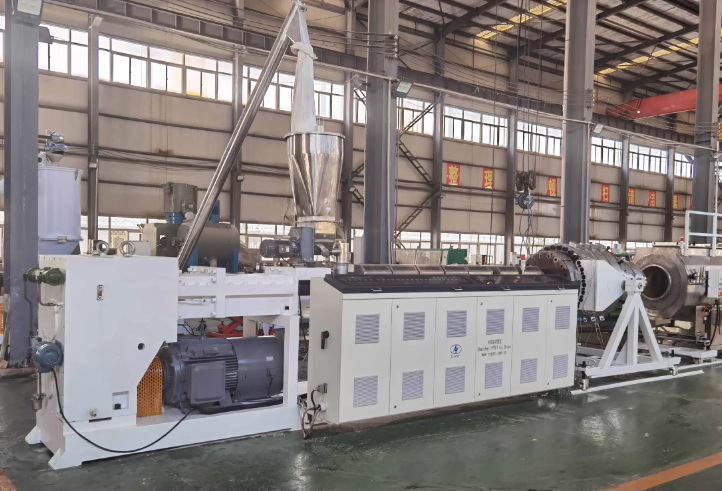Content Menu
● Understanding Pipe Extrusion Machinery
>> How Does Pipe Extrusion Work?
● Benefits of Using Pipe Extrusion Machinery
>> 1. Enhanced Production Efficiency
>> 2. Consistent Product Quality
>> 3. Cost Savings
>> 4. Versatility
>> 5. Sustainability
>> 6. Scalability
● Optimization Strategies for Pipe Extrusion Machinery
>> 1. Regular Maintenance
>> 2. Process Refinement
>> 3. Training Operators
>> 4. Advanced Technology Integration
>> 5. Quality Control Measures
>> 6. Material Selection
● Applications of Pipe Extrusion Machinery
● Challenges in Pipe Extrusion
>> 1. Material Defects
>> 2. Energy Consumption
>> 3. Machine Downtime
>> 4. Environmental Concerns
● Conclusion
● FAQ
>> 1. What materials can be used in pipe extrusion machinery?
>> 2. How does automation improve production efficiency?
>> 3. Are energy-efficient machines worth the investment?
>> 4. What factors should I consider when choosing a pipe extrusion machine?
>> 5. How can I minimize downtime in my extrusion line?
● Citations:
Pipe extrusion machinery plays a pivotal role in modern manufacturing, enabling the production of high-quality pipes with remarkable efficiency. This article explores how these machines can enhance production processes, reduce costs, and meet growing market demands. Through detailed explanations, practical insights, and structured formatting, we'll uncover the transformative potential of pipe extrusion technology.

Understanding Pipe Extrusion Machinery
Pipe extrusion machinery is designed to transform raw plastic materials into finished pipes through a continuous process. The machinery typically includes several components:
- Extruder: The core unit where plastic is melted and shaped.
- Die Head: Determines the pipe's dimensions and profile.
- Cooling Tanks: Ensures the pipe retains its shape while solidifying.
- Haul-Off Units: Pulls the pipe at a consistent speed.
- Cutting Systems: Cuts pipes to desired lengths.
How Does Pipe Extrusion Work?
The pipe extrusion process begins with feeding raw material (usually thermoplastics like PVC or HDPE) into the extruder. Inside the extruder, the material is heated and melted by rotating screws. The molten plastic is then pushed through a die head, which shapes it into a hollow cylindrical form. After exiting the die, the pipe passes through cooling tanks to solidify its shape before being pulled by haul-off units and cut to specified lengths.
Benefits of Using Pipe Extrusion Machinery
1. Enhanced Production Efficiency
Pipe extrusion machinery automates key processes, reducing reliance on manual labor and increasing output speed. Manufacturers can produce continuous lengths of pipes without interruptions, minimizing downtime.
2. Consistent Product Quality
Advanced monitoring systems ensure precise control over parameters like temperature and pressure, resulting in pipes with uniform dimensions and smooth finishes. This consistency is critical for applications requiring high reliability.
3. Cost Savings
By reducing material wastage and labor costs, pipe extrusion machinery offers long-term financial benefits. Energy-efficient models further lower operational expenses.
4. Versatility
Modern machines can produce pipes in various sizes, shapes, and materials, accommodating diverse industry needs such as water supply, gas distribution, and electrical conduits.
5. Sustainability
Energy-efficient designs and waste reduction technologies make pipe extrusion machinery environmentally friendly, aligning with global sustainability goals.
6. Scalability
Pipe extrusion machinery allows manufacturers to scale their operations efficiently by increasing production capacity without compromising quality or performance.
Optimization Strategies for Pipe Extrusion Machinery
To maximize efficiency, manufacturers should implement the following strategies:
1. Regular Maintenance
Routine inspections and timely replacement of worn components prevent unexpected downtimes. Maintenance schedules should include checks on screws, barrels, die heads, and cooling systems.
2. Process Refinement
Fine-tuning parameters like screw speed and temperature profiles can significantly improve throughput while minimizing defects. For example, adjusting cooling rates can help achieve better dimensional stability.
3. Training Operators
Skilled operators are essential for troubleshooting issues and maintaining optimal machine performance. Comprehensive training programs should cover machine operation, safety protocols, and problem-solving techniques.
4. Advanced Technology Integration
Investing in automated systems with AI capabilities enhances precision and adaptability during production runs. AI-driven monitoring tools can detect anomalies in real-time and suggest corrective actions.
5. Quality Control Measures
Implementing rigorous testing protocols ensures defects are identified early, reducing waste and rework costs. Common tests include dimensional checks, pressure testing, and visual inspections.
6. Material Selection
Choosing the right material for specific applications can optimize performance and reduce costs. For instance:
- PVC is ideal for water supply pipes due to its durability.
- HDPE is preferred for gas distribution because of its flexibility.
- PP is suitable for chemical-resistant applications.

Applications of Pipe Extrusion Machinery
Pipe extrusion machinery is widely used across industries for producing:
- Water supply pipes
- Gas mains
- Mining slurry transfer lines
- Irrigation systems
- Electrical conduits
- Medical tubing
- Automotive fuel lines
The versatility of these machines makes them indispensable for infrastructure development as well as specialized applications like medical devices or industrial piping systems.
Challenges in Pipe Extrusion
Despite its advantages, pipe extrusion machinery faces certain challenges that manufacturers must address:
1. Material Defects
Impurities or inconsistencies in raw materials can lead to defects in finished pipes. Manufacturers should source high-quality materials to mitigate this issue.
2. Energy Consumption
While energy-efficient models exist, older machines may consume significant amounts of power during operation. Upgrading to newer models can reduce energy costs.
3. Machine Downtime
Unexpected breakdowns can disrupt production schedules. Preventive maintenance and spare part inventory management are crucial to minimize downtime.
4. Environmental Concerns
Plastic waste generated during production must be managed responsibly to comply with environmental regulations.
Conclusion
Pipe extrusion machinery is a cornerstone of efficient manufacturing operations. By automating processes, ensuring product consistency, reducing costs, enabling scalability, and promoting sustainability, these machines empower manufacturers to meet market demands effectively. Investing in modern extrusion technology not only boosts productivity but also positions businesses as leaders in innovation within their industries.

FAQ
1. What materials can be used in pipe extrusion machinery?
Pipe extrusion machines are compatible with various thermoplastics such as PVC, HDPE, PP, ABS, and specialty blends designed for specific applications like medical tubing or automotive parts.
2. How does automation improve production efficiency?
Automation reduces manual intervention by optimizing machine settings automatically based on real-time data analysis. It ensures consistent quality control while accelerating production cycles.
3. Are energy-efficient machines worth the investment?
Yes! Energy-efficient machines reduce operational costs over time by consuming less power while maintaining high performance levels. They also align with environmental sustainability goals.
4. What factors should I consider when choosing a pipe extrusion machine?
Key considerations include:
- Material compatibility
- Pipe specifications (size/thickness)
- Energy efficiency features
- Automation level
- After-sales support from manufacturers
5. How can I minimize downtime in my extrusion line?
Regular maintenance schedules are essential for minimizing downtime:
- Proactively replace worn components.
- Train operators to identify potential issues early.
- Use advanced monitoring systems to detect anomalies during production runs.
Citations:
[1] https://jydjx.com/optimizing-production-with-pvc-pipe-extrusion-machine-lines/
[2] https://www.accextrusion.com/news/the-pipe-extrusion-process-a-revolution-in-manufacturing/
[3] https://www.bausano.com/en/press-and-news/pipe-extrusion-energy-consumption-and-efficiency
[4] https://www.youtube.com/watch?v=yPDYvPaJoS4
[5] https://www.youtube.com/watch?v=Kv9wpOf5iVg
[6] https://audop.com/bigimage.aspx?id=8&p=0
[7] https://www.caisumachinery.com/benefits-of-using-a-pipe-extrusion-machine-in-manufacturing/
[8] https://www.caisumachinery.com/what-is-a-pipe-extrusion-machine-a-complete-guide/
[9] https://jieyatwinscrew.com/blog/pvc-pipe-extruder-machine/
[10] https://www.youtube.com/watch?v=_nGb9TiKdmw
[11] https://www.youtube.com/watch?v=mHhfUQDgAwQ
[12] https://www.istockphoto.com/photos/pipe-extrusion
[13] https://www.yjing-extrusion.com/how-to-improve-efficiency-with-a-pipe-production-extrusion-line.html
[14] https://www.adremac.com/complete-guide-to-pipe-extrusion-machinery-equipment-and-advanced-cutting-solutions/
[15] https://www.twinscrew.net/en/article/medical-tube-extrusion-line.html
[16] https://www.linkedin.com/pulse/5-benefits-plastic-pipe-extrusion-line-dora-ding
[17] https://jydjx.com/benefits-of-working-with-a-professional-plastic-pipe-extrusion-line-supplier/
[18] https://www.sciencedirect.com/science/article/abs/pii/S2214785321077087
[19] https://tecnomaticsrl.net/wp-content/uploads/2019/06/08.pdf
[20] https://www.blessonextrusion.com/news/exploring-the-manufacturing-process-of-pvc-pipes-the-core-process-in-the-plastic-pipe-extrusion-industry/






















